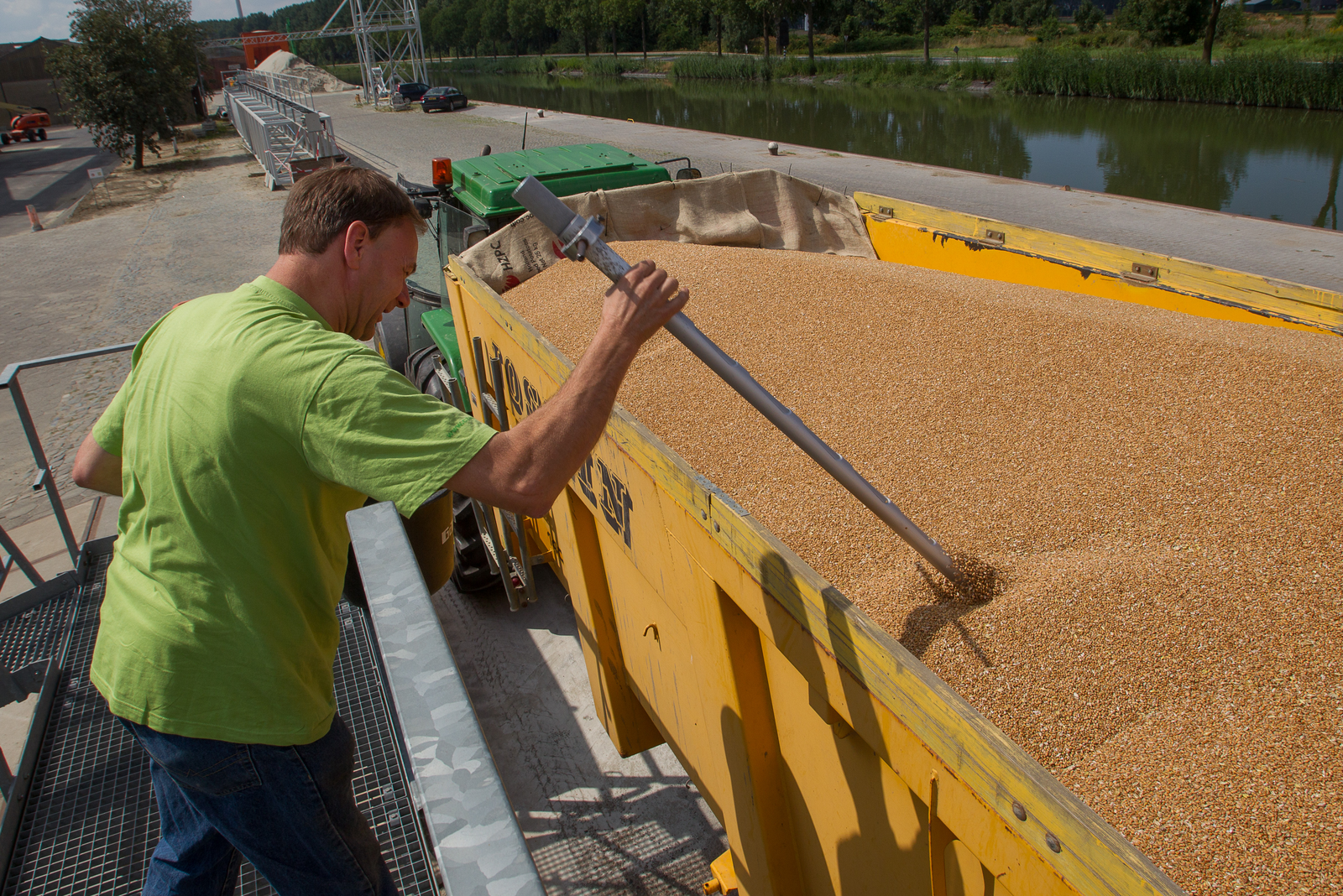NSP multi-enzymes max out energy potential

Non-Starch-Polysaccharides (NSP) enzymes exhibit a high specificity for the corresponding NSP fibre substrate. The laboratory of AVEVE Biochem fingerprints feed ingredients worldwide sonutritionists are able to fine tune the efficiency of multi-enzymes to max out the energy potential of cereal based diets.
By Dr Hans Christoph Wagner, AVEVE Biochem NV, Belgium
The anti-nutritive activities of soluble and insoluble Non-Starch-Polysaccharides (NSP fibre) are eliminated effectively by supplementation of NSP multi-enzymes into feed. Firstly, such biological active substances cause a partial degradation of NSP fibre to smaller molecules hence to reduce highly viscous ingesta. Secondly, impenetrable cellulosic barriers caused by insoluble NSP fibre are removed. Furthermore enzyme linked feed energy upgrading systems enable nutritionists to precisely recalculate feed formulations on nutrient values and costs.
Analysing substrate fingerprints
Animal feed ingredients contain non-starch-polysaccharides (NSP) and specified NSP fibre substrates. NSP fibre substrates refer to the largest heterogenic variety of polysaccharide molecules in nature and as mono-gastric animals do not synthesise and release any corresponding digestive enzyme, NSP fibre substrates are practically indigestible. In contradiction the chemically α-linked polysaccharide molecules of starch substrates are highly digestible and can be depolymerised by the body’s own synthesised amylases enzymes.
NSP enzymes exhibit a high specificity for the corresponding NSP fibre substrate, hence each enzyme only breaks down a highly specific NSP fibre substrate. As NSP fibre substrates of different feed ingredients consist of various NSP fibre types their typical NSP molecule fingerprint, so called – the lock – has to be determined to develop the appropriated NSP-enzyme composition – the key. The lock-key-principle is the commonly used term to describe this unique one-to-one relation. As the efficiency of multi-enzymes is linked to fine-tuned compositions and ratios of different NSP enzymes, research on molecular composition of NSP fibre substrates is an ongoing procedure. Hence the AVEVE Biochem NV enzyme laboratory collects worldwide and analyses cereals and other commonly used feed ingredients on NSP fibre fingerprints. Results are used for monitoring positive in vivo responses in practice, particularly with regard to product innovation.
Categorising negative effects
The negative effects of NSP fibre play a crucial role in the digestion process of monogastric animals, lead to digestive limitations in the gut system and thus have to be considered in developing feed formulations. These negative effects can be categorised into two groups. Firstly, NSP fibre can increase the viscosity in the intestine by their high water binding capacity. As a consequence increased viscosity slows down the migration and absorption of nutrients, lowers the feed intake and reduces the access of digestive enzymes synthesized and released by the animal itself. The commonly used synonym to describe this phenomenon is the “Gel effect”. Secondly, insoluble NSP fibre can encapsulate feed nutrients which become less accessible for digestion and absorption in the small intestine. These nutrients enter undigested the large intestine where they become a substrate for unintended bacterial fermentation. For digestion of NSP fibre by cutting the glycosidical bonds of polysaccharide molecules, the use of a substrate adapted NSP multi-enzyme in feed is the only available but also most effective choice.
Fulfilling multiple requirements
Multi-enzyme functional activities work synergistically to break down fibre structures which result in enhanced feed digestibility. The composition and effect of these concepts have to be validated by many animal trials linked to the use of a wide range of feed ingredients and specific requirements for nutrient values of practiced local feed formulation systems worldwide.
Multi-enzyme concepts that combine high xylanase together with high ß-glucanase enzyme activity have been proven to be very efficient, reliable and cost-effective for use in mainly incorporated cereal-soy diets as well as diets with increasing use of ingredient by-products, e.g. rice bran and copra meal.
Besides these two main enzyme activities, such multi-enzymes are assembled with sufficient enzyme side-activities like mannanase and cellulase cutting glycosidical bonds of a broad spectrum of underrepresented NSP fibre types, eg. mannan and cellulose. In particular high ß-glucanase containing enzymes have also been proven to work effectively in corn-soy diets together with a strong xylanase activity.
Practical approach
The so called “energy-upgrading concept” using NSP multi-enzyme can be practically approached via different formulation exercises:
- it can be added on top of the feed formulation to improve the animal performance or,
- it can be used in feed reformulation to decrease the matrix value of the minimum feed energy restriction, obtaining the same or better animal performances and reduce total feed formulation cost at once,
- by reformulating with regard to the energy-upgrading concept, with which nutritionists can create a new raw material matrix by adapting energy values linked to specific raw materials, e. g. corn and/or wheat,
- last but not least evaluating the energy upgrading and adapting its energy value into the nutrient value matrix of the NSP-enzyme itself, considering the majority of incorporated cereals (corn-, barley- and wheat-based diets) and at the same time respecting feed formulations for young (piglet, broiler) and adult (sow/pig and layer) animals.
For practical feed application of NSP multi-enzymes a wide range of animal species should also be considered. Hence, the product registration should cover a broad application spectrum, e.g. for piglet-, pig-, layer pullet-, layer-, broiler-, duck and turkey diets. Multi-enzyme concepts are multifunctional and highly effective tools for nutritionists.
They allow a larger flexibility in use of raw materials and in feed formulating. At the same time they increase animal performance and lower feed costs.
Source: AllAboutFeed magazine Vol 21 nr 10, 2013











